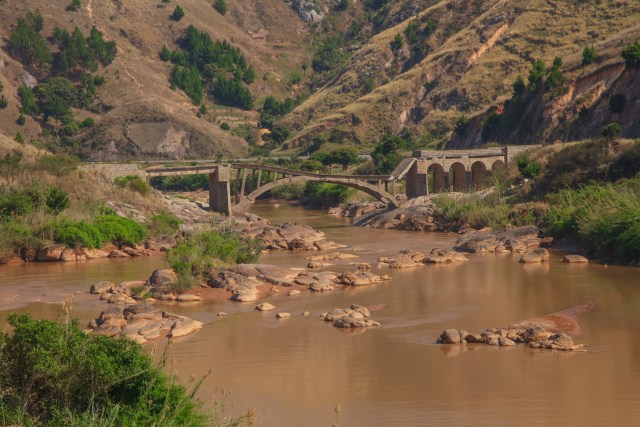Before leaving Ranomafana we had a walk in the rainforest but it was very busy with several tour groups, so it was difficult to see much of the wildlife. We did see a few lemurs and brief glimpses of some birds. Deforestation has led to a reduction in some lemur populations in addition to hunting. The Brown Lemur population has reduced by a quarter since 1995. The Aye-Aye is fady to some of the locals and is therefore killed on sight.
After lunch we re-traced our route back to RN7 and Ambositra. Many of the towns we passed through had lots of people returning from the local market. Village people sell their crops there, buy essentials and socialise with friends and relatives. Young people meet up with their friends. The valleys were full if rice paddies and crops with many roadside stalls selling bananas, pineapples, honey, charcoal and even rum in re-used plastic bottles.

 Ambositra had a lot of art and craft shops selling wood carvings, paintings, raffia work, jewellery and marquetry. We spent the night in Ambalavo and the follow morning began the drive back to Tana. The road crosses the Peace Bridge which was constructed in 2003.
Ambositra had a lot of art and craft shops selling wood carvings, paintings, raffia work, jewellery and marquetry. We spent the night in Ambalavo and the follow morning began the drive back to Tana. The road crosses the Peace Bridge which was constructed in 2003.
It replaced the older Fatihita Bridge which was blown up in 2002 during political conflicts. I read somewhere that there have been many people have taken their own lives by jumping from the bridge.
All too soon were back in the middle of Tana which was very busy. Due to the heat we had the car windows open, so our guide warned us not to hold phones near the window or make bags easy to grab. At Tana airport there are only two departure gates but they were very efficient and we left the red island on time.



